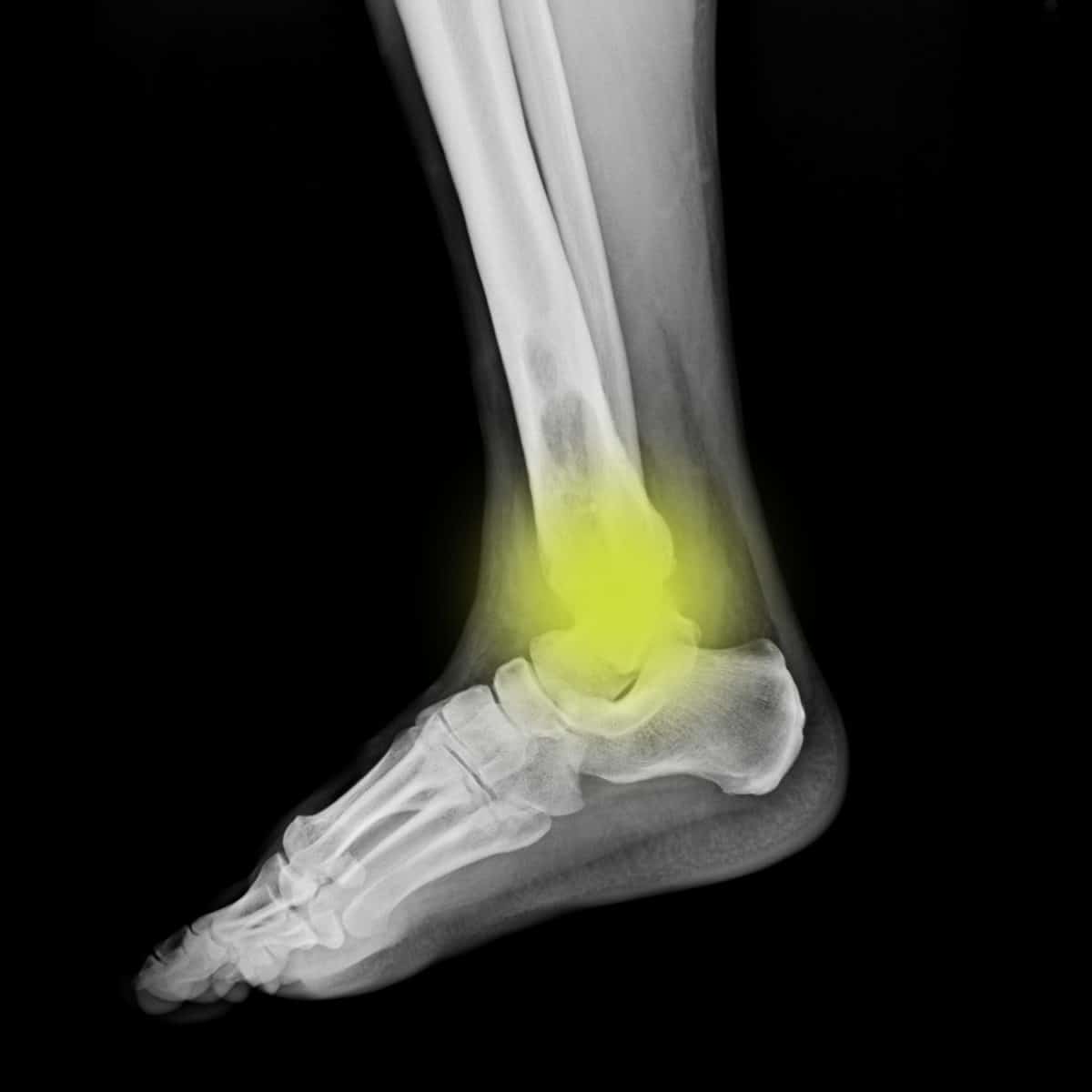High Ankle Sprain
Tibiofibular Ligament Sprain
Home » Conditions » High Ankle Sprain Treatment in Dallas
High Ankle Sprain Injury
While low ankle sprains represent 90% of all ligament injuries to the ankle, the more rare, high ankle sprain, requires special care. Dr. Robert Berry, a renown sports physician and orthopedic surgeon treats these injuries regularly. If you’ve recently suffered an ankle injury, we recommend getting your ankle checked to ensure you aren’t at risk for a high ankle sprain, as well.
High Ankle Sprain FAQs
What is a High Ankle Sprain?
If you have sprained or otherwise injured your ankle recently, you could be at risk of having an injured syndesmosis ligament, as well. Most call this a high ankle sprain. This type of injury can occur when the ankle is forcefully twisted outwards or if the leg is twisted inwards, while the foot is held stable.
How to Know if You Have a High Ankle Sprain?
High ankle sprain injuries often occur in conjunction with other ankle injuries, and symptoms can often meld with those of ankle sprains or fractures. However, some of the symptoms that characterize high ankle sprain injuries include:
- Pain above the ankle, which typically increases with outward rotation of the foot
- Calf pain
- Inability to place weight on the leg
The severity of your symptoms depends entirely on the severity of your high ankle sprain. Also, if you've fractured a bone in conjunction with the high ankle sprain injury. Some symptoms may only appear when you place stress on your ankle, while others will be continuous.
How to Treat a High Ankle Sprain?
Your tibia and fibula support your entire weight and force of your body while you are walking or running. Damaging the ligaments which stabilize these bones will likely require you to use crutches or a walking boot.
Other treatments are contingent on whether or not your ankle has become unstable. In syndesmosis ligament injuries where the ankle has become unstable, surgery is usually necessary.
Surgery for High Ankle Sprains
With surgical treatment, we pass metal screws through the fibula and into the tibia. This holds your bones and the syndesmosis ligament in their correct positions, while the ligament heals. We usually removed the screws about 3-4 months later. Physical therapy will be necessary afterward, as well as a gradual return to vigorous physical activity.
Who Treats High Ankle Sprain?
Usually an orthopedic surgeon or sports physician will diagnose a high ankle sprain injury.
Anyone who has recently sprained or fractured their ankle should be examined for a possible high ankle sprain.
The majority of the time, Dr. Berry will need to have X-rays done of your foot and ankle to determine if you have suffered a high ankle sprain. Normal X-rays will not typically show a high ankle sprain, so we use a special type of X-ray called a stress X-ray to determine whether or not you have this injury.
In a stress X-ray, the X-ray examiner will apply force to the ankle during the X-ray. If Dr. Berry sees that the syndesmosis ligament shifts under pressure, then it is likely a syndesmosis ligament injury has occurred. CT scans and MRIs are also sometimes used to confirm the diagnosis of a high ankle sprain.
With this, Dr. Berry looks for a gap in the joint where the tibia and fibula connect. A gap of less than 2mm is considered to be “stable”, while a gap of larger than 2mm is at risk of becoming “unstable”.
How Long Does a High Ankle Sprain Take to Heal?
What we consider a common ankle sprain is technically a “low ankle sprain”. These types of sprains, low ankle sprains, heal quickly with rest and proper pain management. However, high ankle sprains heal more slowly, especially if your injury is unstable.
Stable High Ankle Sprain Treatment
Stable injuries can be treated with crutches or a walking boot and will require a recovery period of about six weeks.
Unstable High Ankle Sprain Treatment
Unstable injuries requiring surgery will require anywhere from 3 to 6 months to fully recover from, though this can vary, depending on your specific injury.
Do I Need Physical Therapy for a High Ankle Sprain?
Physical therapy for a high ankle sprain following surgery will entail:
- Preventing further injury by teaching you proper ways to move your foot and leg so as not to irritate the site of the injury
- Regaining full range of motion by strengthening the ankle and calf muscles
- Restoring joint flexibility
- Sport-specific skills, if you are an athlete
Dr. Berry will work with your physical therapist on staff to come up with a treatment that is safe and works for you. Placing too much stress on the site of the injury too early can injure the ligament again, and cause problems like ankle arthritis down the road.
Nonsurgical treatments like rest, anti-inflammatory medications, and eventually physical therapy are used to treat syndesmosis ligament injuries in which the ankle remains stable.
Ankle Anatomy
The syndesmosis is the ligament that connects the tibia and the fibula, which are the two bones that make up the lower leg. The tibia is more commonly known as the shin bone, and it supports most of the body’s weight. The fibula is smaller and located on the outside of the leg.
These bones work together to stabilize the ankle joint, and they themselves are stabilized by the syndesmosis ligament. Injuries to the syndesmosis ligament could cause the ankle to become unstable.

